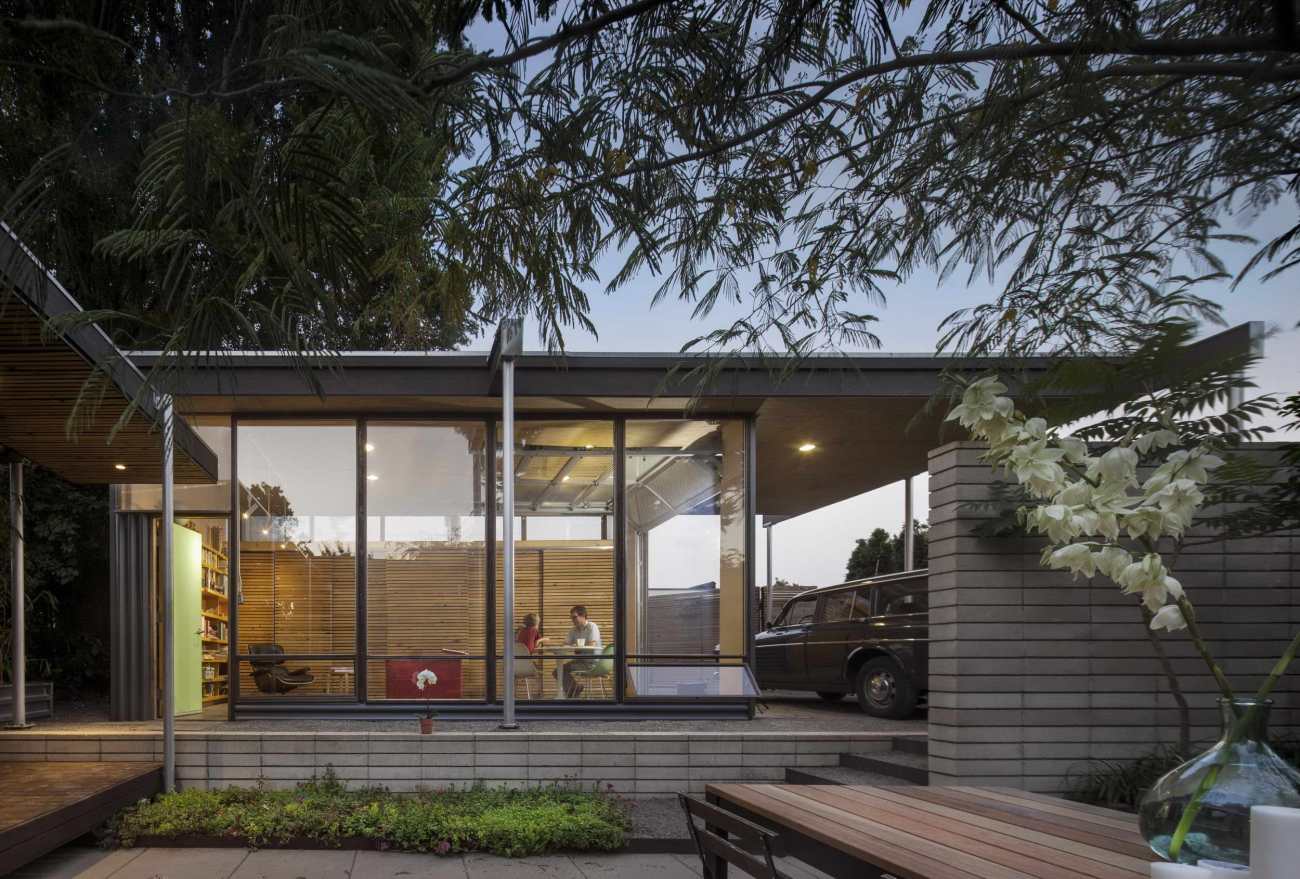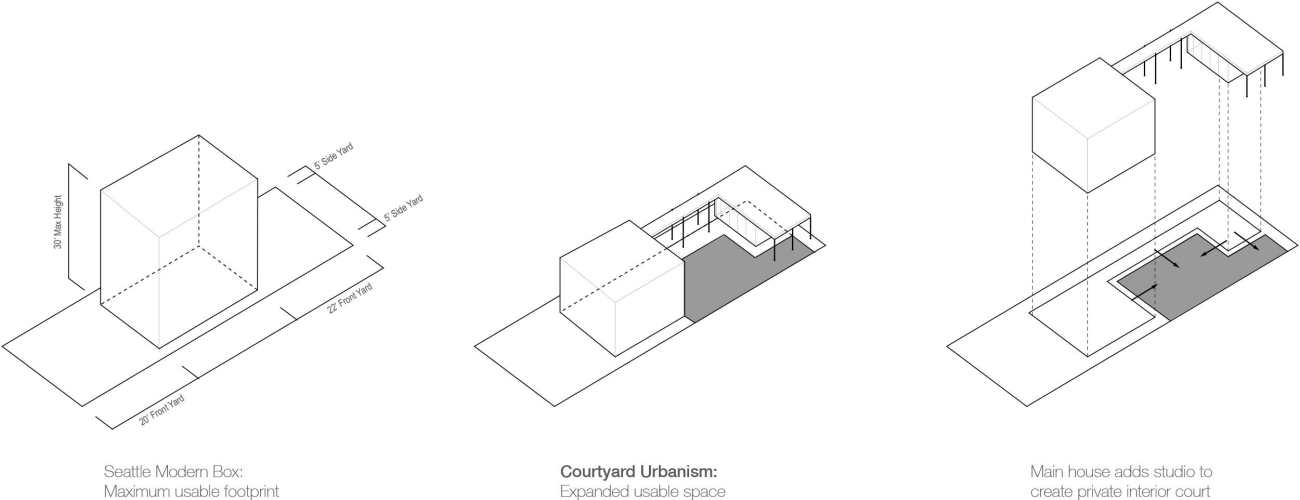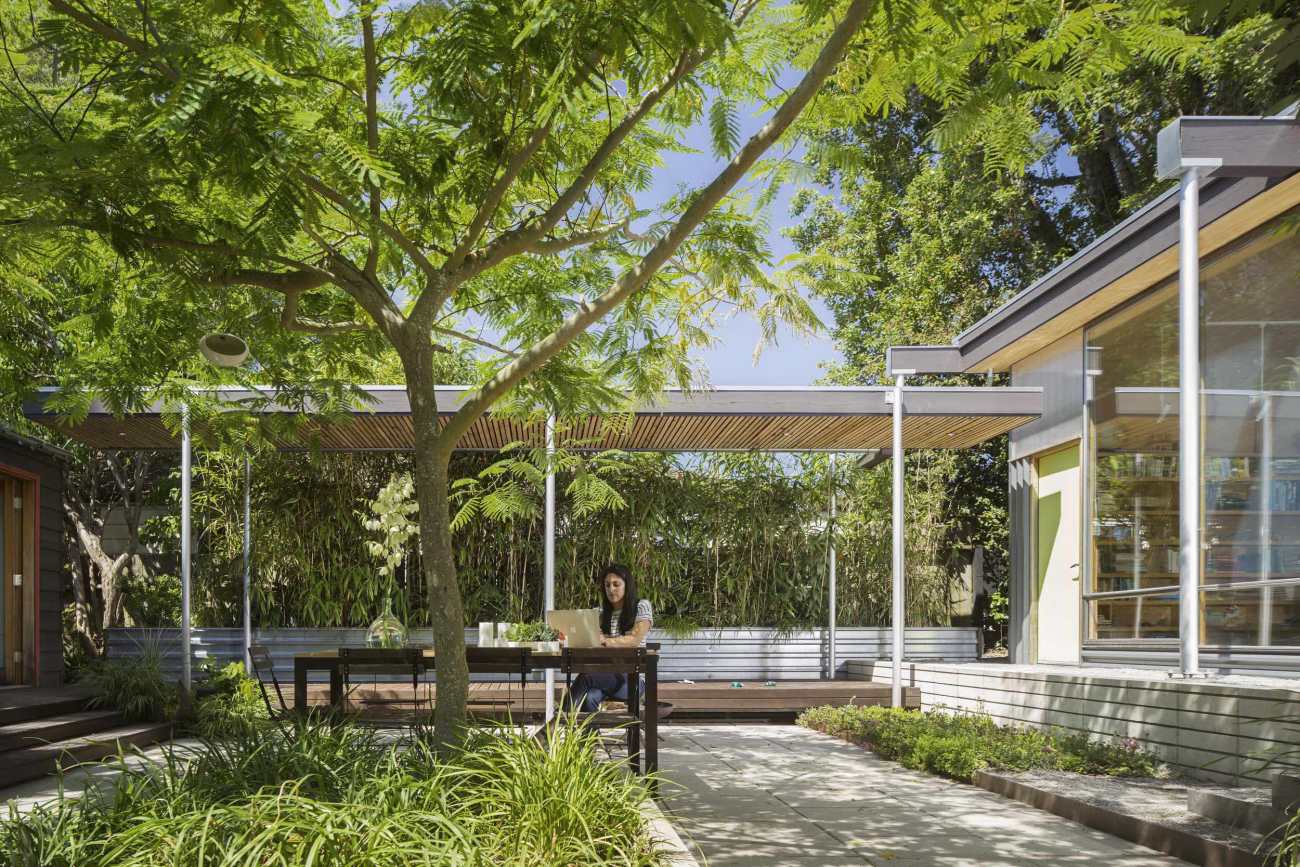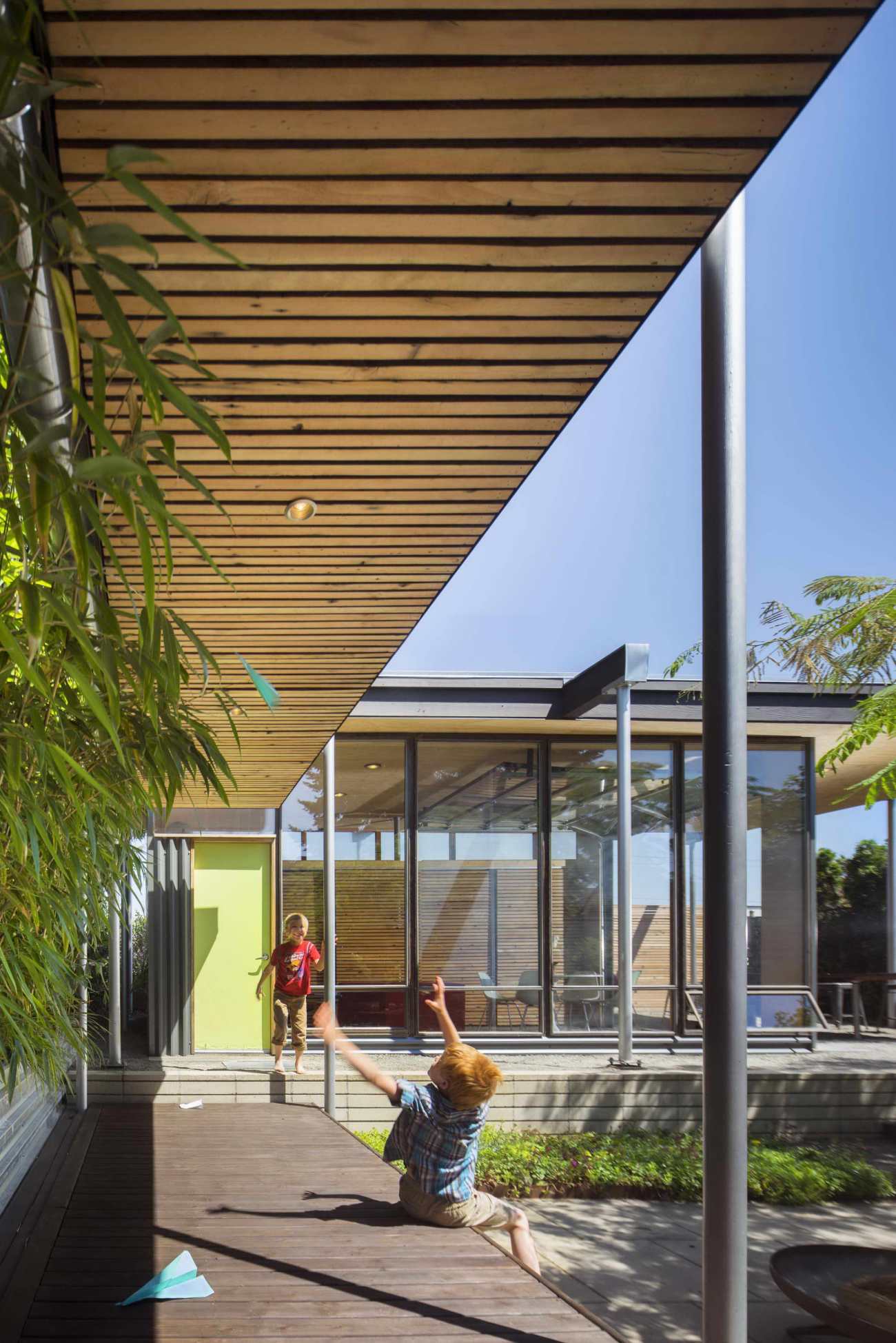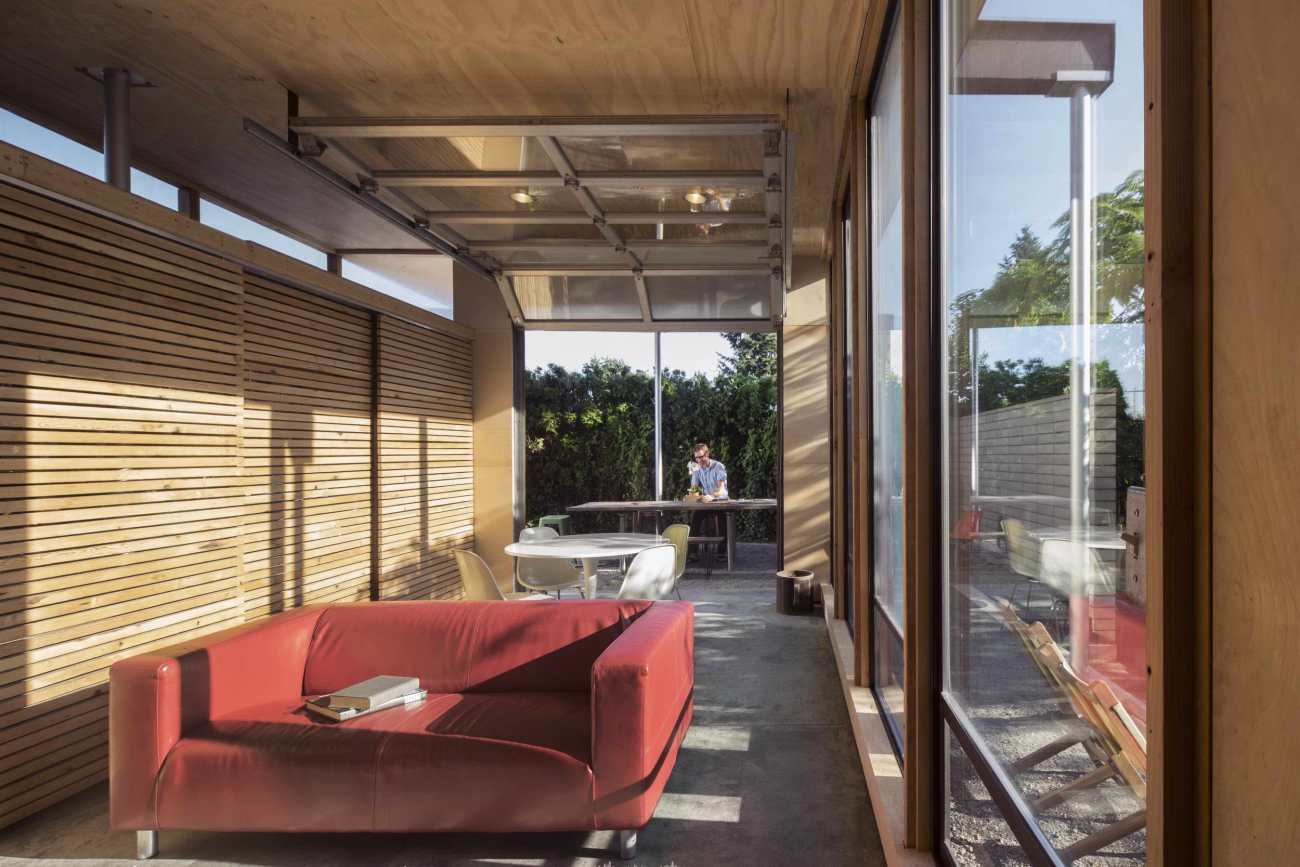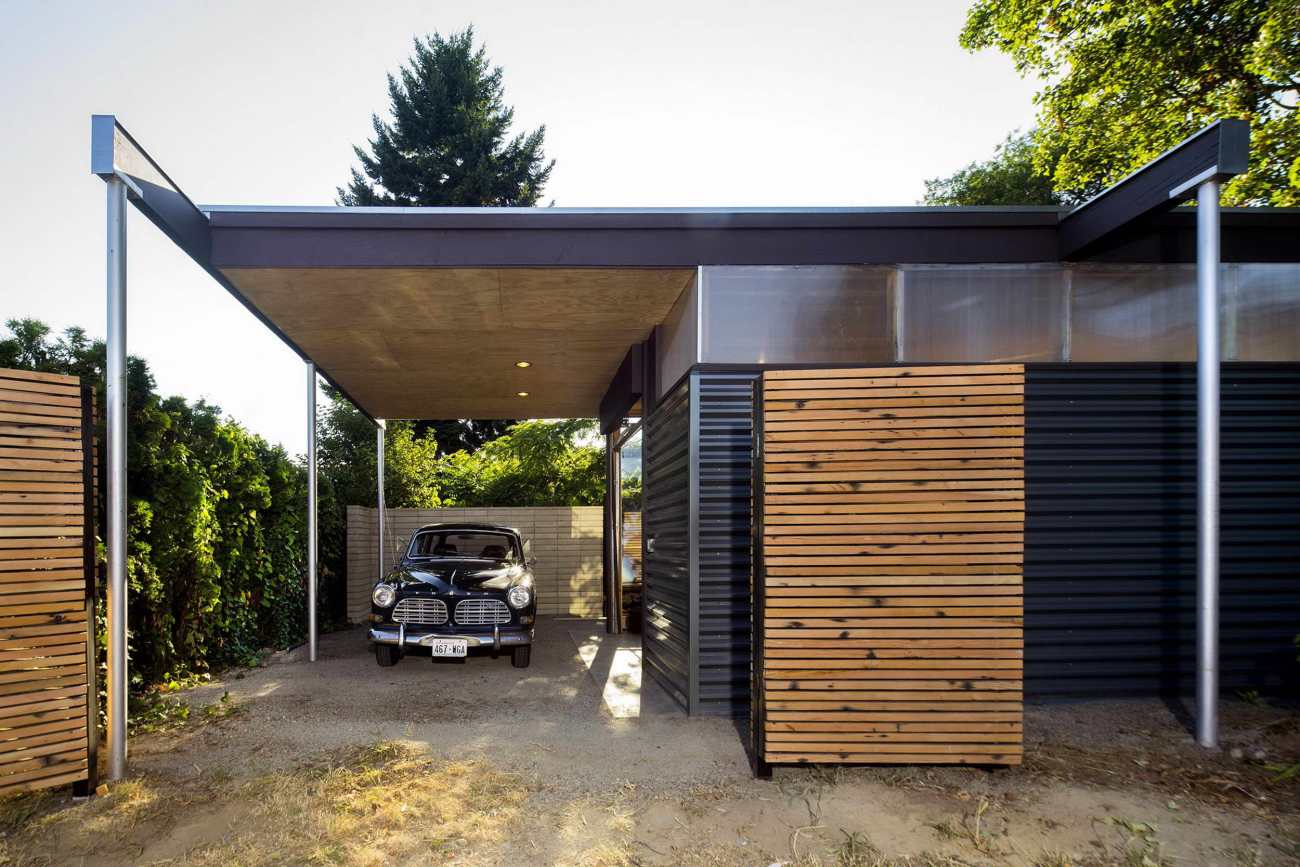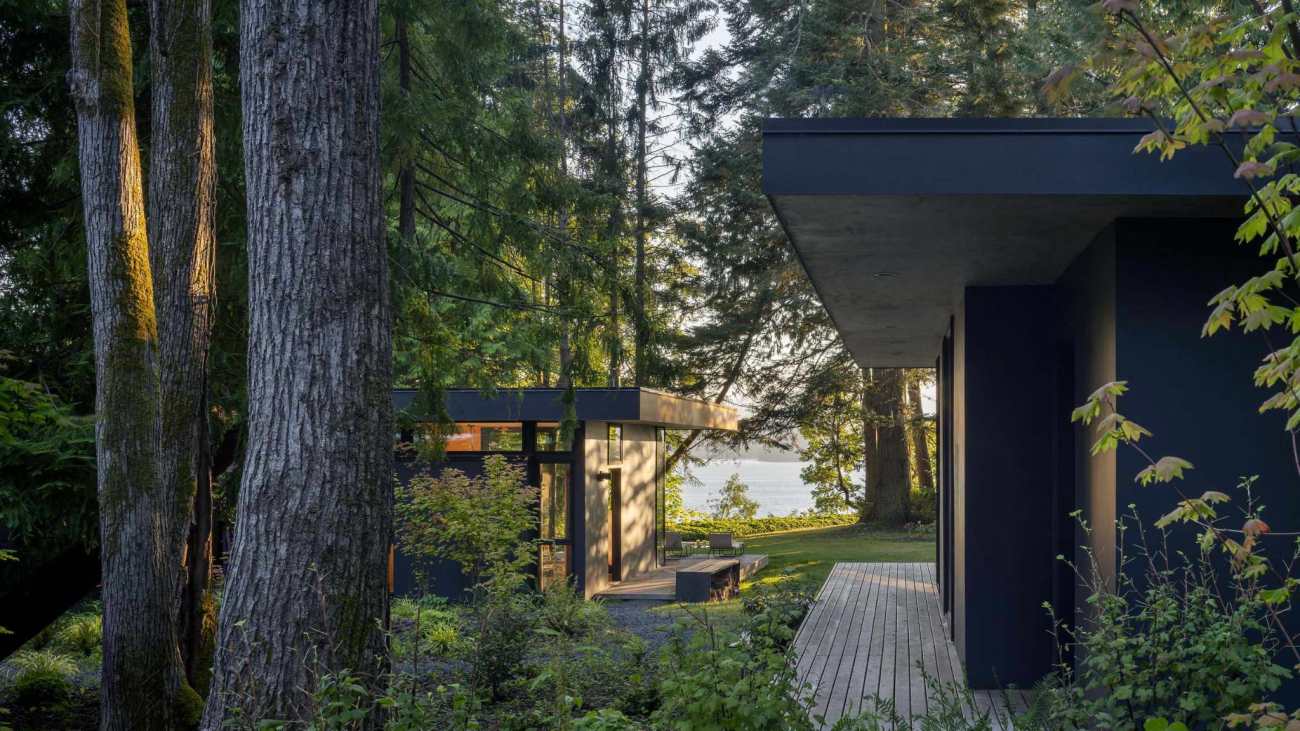| 公司: | Wittman Estes | 类型: | 建筑 |
|---|---|---|---|
| 地区: | 美国 | 标签: | 别墅私宅 | 办公室 |
西雅图的住房短缺增加了独户社区的压力,在有限的独户土地上提供更多的可用空间。规范的新房拆除了现有的小型建筑,取而代之的是 "西雅图现代盒子",在分区后退范围内最大限度地扩大建筑规模和密度。
The Seattle housing shortage has increased pressure on single family neighborhoods to provide more usable space on limited single family lots. Normative new housing demolishes existing small buildings and replaces them with ‘Seattle modern boxes’ that maximize building size and density within zoning setbacks.
项目蚱蜢庭院工作室提供了另一种城市密度,称为庭院城市主义。保持一栋1940年代房屋的小面积(该地块面积为4500平方英尺),沿着后巷增加了一个360平方英尺的多功能工作室。由此产生的间歇空间形成了一个向天空开放的私人露台。这种庭院式的城市设计模糊了室内和室外空间的界限,使场地的可用面积增加了三倍。一棵中央丝树在夏季提供了斑驳的树荫。通过从相邻的树木和天空中 "借用景观",营造出一个更大的地产错觉。
Grasshopper Courtyard Studio offers an alternative density called courtyard urbanism. Maintaining the small footprint of a 1940s house (the lot is 4,500 square feet), a multifunctional 360-square-foot studio was added along the rear alley. The resulting interstitial space formed a private terrace open to the sky. This courtyard urbanism tripled the usable square footage of the site by blurring the lines between indoor and outdoor space. A central silk tree provides dappled shade in summer. The illusion of a much larger property is created through ‘borrowed landscape’ from adjacent trees and sky above.
▽项目概念 Concept
灵感来自中国古代南向庭院住宅,中央铺设的露台是一个受保护的私人区域,可供用餐、娱乐、休息和全年玩耍。北面宽阔的有顶走道有时会成为非正式的座位,有时则是儿童表演的舞台。开放式的工作室在程序上是不确定的,以鼓励最大的灵活性。未来的用途包括来访客人、短期租赁空间、实用/工作室空间和主屋的游戏空间。亭子的屋顶,漂浮在储藏室、浴室、洗衣房和未来厨房的体量上,延伸形成一个车棚和室外工作室空间。 工作室的北侧是一个图书馆和休息室,架子由重新利用的中密度纤维板和胶合板搭建而成。卫生间采用杉木和黑木的户外材料搭建,可以自然湿润和风化。敞开式的板式木地板在下方排水,加大号的窗户让自然光穿过工作室,进入庭院。
Inspired by ancient Chinese south facing courtyard housing, the central paved terrace is a protected private area for dining, entertaining, lounging and year-round play. The wide covered walkway to the north sometime becomes informal seating, at other times a stage for children’s performances. The open plan studio is programmatically indeterminate to encourage maximum flexibility. Future uses include visiting guests, short term rental space, utility/workshop space, and play space for the main house. A pavilion roof, floating over volumes that house storage, bathroom, laundry, and future kitchen, extends to form a carport and outdoor workshop space. The north side of the studio is a library and lounge, with shelving built of repurposed MDF tabletops and plywood. The bathroom is built with outdoor materials of cedar and ipe that can get wet and weather naturally. The open-slat wood floor drains below, and clerestory windows allow natural light through the studio and into the courtyard.
工作室与室外之间的间歇区由砖石墙、木质平台界定,并由大面积的亭式屋顶保护,使其不受天气影响。由建筑和景观元素组成的边界墙屏蔽了相邻的邻居,在密集的单家独户社区中创造了一片私人绿洲。 一面混凝土块墙保留了地势的变化,并将小巷从视野中屏蔽。工作室本身就是一个边界,过滤了小巷的景色,同时光线从神龛中流过。
The interstitial zones between the studio and outdoors are defined by masonry walls, wood decks, and are protected from the weather by large pavilion roofs. A boundary wall of constructed and landscape elements screen the adjacent neighbors, creating a private oasis in a dense single family neighborhood. A concrete block wall retains the grade change and screens the alley from view. The studio is a boundary in itself, filtering alley views while light streams through the clerestory.
这个小工作室可以适应多种用途和家庭安排。小巧的建筑占地面积和大面积的室外私密空间的灵活性,使整个项目的使用最大化、一体化。作为对城市资源稀缺性的回应,它鼓励人们重新思考单户型地段的安排,并为西雅图的未来提供了另一种密度。
The little studio is adaptable to a multiplicity of uses and family arrangements. The flexibility of a small building footprint and large private outdoor space maximizes and integrates the use of the entire property. As a response to urban resource scarcity, it encourages rethinking the arrangement of the single-family lot and offers Seattle an alternative density for the future.
车棚位于后巷外,大门由再生杉木建造,与工作室的木质屏风相匹配。钢柱、长木梁和椽子是从附近一个20世纪60年代的教堂车棚中打捞出来并重新利用的。亭子式的屋顶为室内/室外项目提供了一个有顶的车棚和工作区,并向小巷开放。
The carport, located off the back alley, has gates built of reclaimed fir that match the studio’s wood screens. Steel columns, long wood beams and rafters were salvaged and repurposed from a nearby 1960s church carport. The pavilion-style roof provides a covered carport and work area for indoor/outdoor projects and opens onto the alley.
▽轴侧分解图 Axonometric drawing
Project: Grasshopper Courtyard Studio
Project Location: Seattle, Washington
Architecture: Wittman Estes (Matt Wittman and Jody Estes)
Construction: Greg Winger Construction, Western Sound Concrete Works
Photography: Nic Lehoux
更新日期:2020-12-21 15:30:36
非常感谢 Wittman Estes 带来的精彩项目, 查阅更多Appreciations towards Wittman Estes for sharing wonderful work on hhlloo. Click to see more works!
